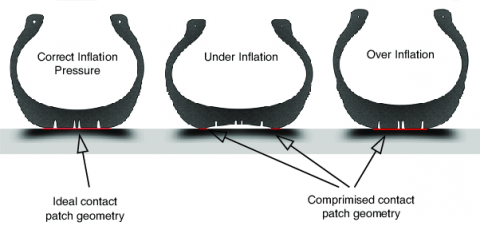
Driving into the Future: New Car Technology and Vehicle Maintenance
Exploring the Impact of New Car Technology on Driver Safety and the Vital Role of Vehicle Maintenance
As automotive technology continues to advance at a rapid pace, it is crucial to understand how these innovations are transforming driver safety. From advanced driver assistance systems to cutting-edge safety features, new car technologies have the potential to revolutionize the way we navigate the roads. However, amidst the excitement of these advancements, it is equally important not to overlook the significance of proper vehicle maintenance. In this article, we delve into the profound impacts of new car technology on driver safety and emphasize the indispensable role of regular maintenance in ensuring safe and reliable transportation. Join us as we embark on this journey into the future of driving.
How Tire Pressure Affects Fuel Economy
 Ensuring proper tire pressure and tread can save you money. “Where the rubber hits the road” has a major financial impact on your driving. Tire pressure being too high, or too low, can affect your gas mileage, which could cost you more money at the gas pumps. Tire tread can impact your fuel economy because 35-50 percent of the rolling resistance of a tire comes from the tire tread. The shallower the tread, the more fuel efficient the tire will be. Click for more information about this topic. (1)
Ensuring proper tire pressure and tread can save you money. “Where the rubber hits the road” has a major financial impact on your driving. Tire pressure being too high, or too low, can affect your gas mileage, which could cost you more money at the gas pumps. Tire tread can impact your fuel economy because 35-50 percent of the rolling resistance of a tire comes from the tire tread. The shallower the tread, the more fuel efficient the tire will be. Click for more information about this topic. (1)
![]()
What Do These Dash Icons Mean?
Dashboard icons mean something. The pretty lights that illuminate on your dashboard could be trying to tell you a story. Check engine, battery life, coolant temperature, transmission temperature, oil pressure, tire pressure monitoring, brake systems, traction control, and washer fluid are just some of the indicators that will tell you there is a problem with your vehicle. DO NOT IGNORE these lights. Best case, it could cost you money, worst case it could cost you your life. Click for more information about this topic. (2)
Are Back-Up Cameras Fool Proof?
Back-up cameras and blind spot monitoring systems are useful tools, however, should not be solely relied upon. Just like any other piece of technology, it may fail. It is important to physically check behind you when backing up and your blind spots when changing lanes. Additionally, the sensors may not detect motorcycles or fast-moving vehicles. It is still the driver’s responsibility to ensure that these areas are clear, so that a crash doesn’t occur. You’ll get the ticket, not the car. Click for more information about this topic. (3) Click for more information about this topic.(4)
 How Do Lane Assist and Automatic Breaking Features Affect Driver Safety?
How Do Lane Assist and Automatic Breaking Features Affect Driver Safety?
Lane assist and automatic emergency braking can be startling to the driver. There could be a tendency for the driver to overreact when these features are activated. It is imperative that you understand how these features will affect you in critical incidents, to help avoid a crash. Click for more information about this topic. (5)
Where Can I Learn More About My Vehicle’s Technology Features?
If you are not aware of all your vehicle’s technological features, a simple Google search of your vehicle or a perusal of your driver’s manual can be informative. Understanding how the technology works and how it can protect you, your passengers, and others, is key. Technology does its job; but you have to do yours, too. Check out this link for a simple guide of technology that may be found in your vehicle. (6)
Sources:
- https://www.energy.gov/energysaver/tires-and-fuel-economy#:~:text=Treadwear,efficient%20the%20tire%20will%20be
- https://www.caranddriver.com/features/a35865614/dashboard-warning-lights-explained/
- https://mycardoeswhat.org/safety-features/back-up-camera/
- https://mycardoeswhat.org/safety-features/blind-spot-warning/
- https://www.nhtsa.gov/equipment/driver-assistance-technologies
- https://mycardoeswhat.org/
About the Author(s):
The “Driver Technology” subcommittee group of the Florida Teen Safe Driving Coalition is composed of members of the Florida Department of Transportation and local law enforcement. The vast experience of these members provides a unique look at technological features from both an administrative and operational viewpoint.


 How Do Lane Assist and Automatic Breaking Features Affect Driver Safety?
How Do Lane Assist and Automatic Breaking Features Affect Driver Safety? 